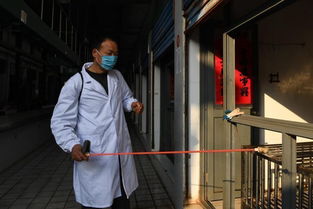Infections from Human Bites: A Comprehensive Overview
Human bites can be surprisingly dangerous, often leading to infections that can range from mild to severe. When someone is bitten by another person, it’s crucial to understand the potential risks and the necessary steps to take to prevent complications. This article delves into the various aspects of infections resulting from human bites, including the types of bacteria involved, common symptoms, treatment options, and preventive measures.
Types of Bacteria Involved

Human bites can introduce a variety of bacteria into the wound, some of which are more harmful than others. The most common bacteria include:
| Bacteria | Description |
|---|---|
| Staphylococcus aureus | Causes skin infections, pneumonia, and bloodstream infections |
| Streptococcus pyogenes | Causes strep throat, skin infections, and scarlet fever |
| Pseudomonas aeruginosa | Causes infections in wounds, burns, and respiratory tract |
| Bacillus anthracis | Causes anthrax, a serious and potentially fatal disease |
These bacteria can enter the body through the broken skin and cause infections, which may lead to complications if not treated promptly.
Common Symptoms

After a human bite, it’s important to monitor for signs of infection. Common symptoms include:
- Pain, redness, and swelling around the bite area
- Increased warmth in the affected area
- Pus or discharge from the wound
- Feeling unwell, such as fever, chills, or fatigue
These symptoms may indicate a bacterial infection, and it’s essential to seek medical attention if they occur.
Treatment Options

When treating an infection from a human bite, healthcare providers may take the following steps:
-
Cleaning the wound: Thoroughly cleaning the bite area with soap and water can help remove bacteria and reduce the risk of infection.
-
Applying an antibiotic ointment: This can help prevent infection and promote healing.
-
Draining the wound: If the wound is deep or has a large amount of pus, it may need to be drained to remove the infected material.
-
Prescribing antibiotics: In some cases, oral or intravenous antibiotics may be necessary to treat the infection.
-
Monitoring the wound: Regular follow-up appointments may be needed to ensure the infection is resolving and to adjust treatment as needed.
It’s important to complete the full course of antibiotics, even if symptoms improve, to ensure the infection is fully treated.
Preventive Measures
Preventing infections from human bites involves taking precautions to avoid being bitten and to minimize the risk of infection if a bite does occur. Here are some tips:
-
Avoiding situations where you may be bitten: This includes avoiding physical altercations and being cautious around individuals who may be aggressive or unstable.
-
Using protective gear: If you work in a high-risk environment, such as law enforcement or healthcare, wearing protective gloves and other personal protective equipment can help prevent bites.
By taking these precautions, you can help reduce the risk of infections from human bites and ensure a quicker recovery.
In conclusion, infections from human bites can be serious and require prompt attention. Understanding the types of bacteria involved, common symptoms, treatment options, and preventive measures can help you take the necessary steps to protect yourself and others.




